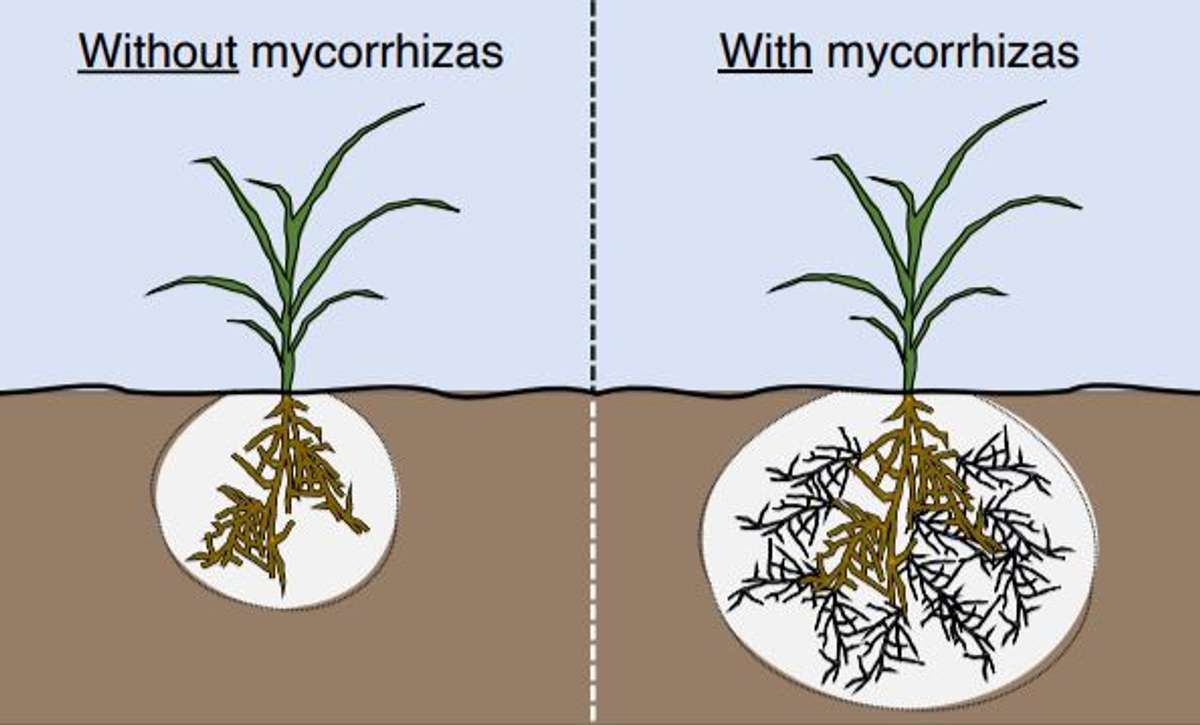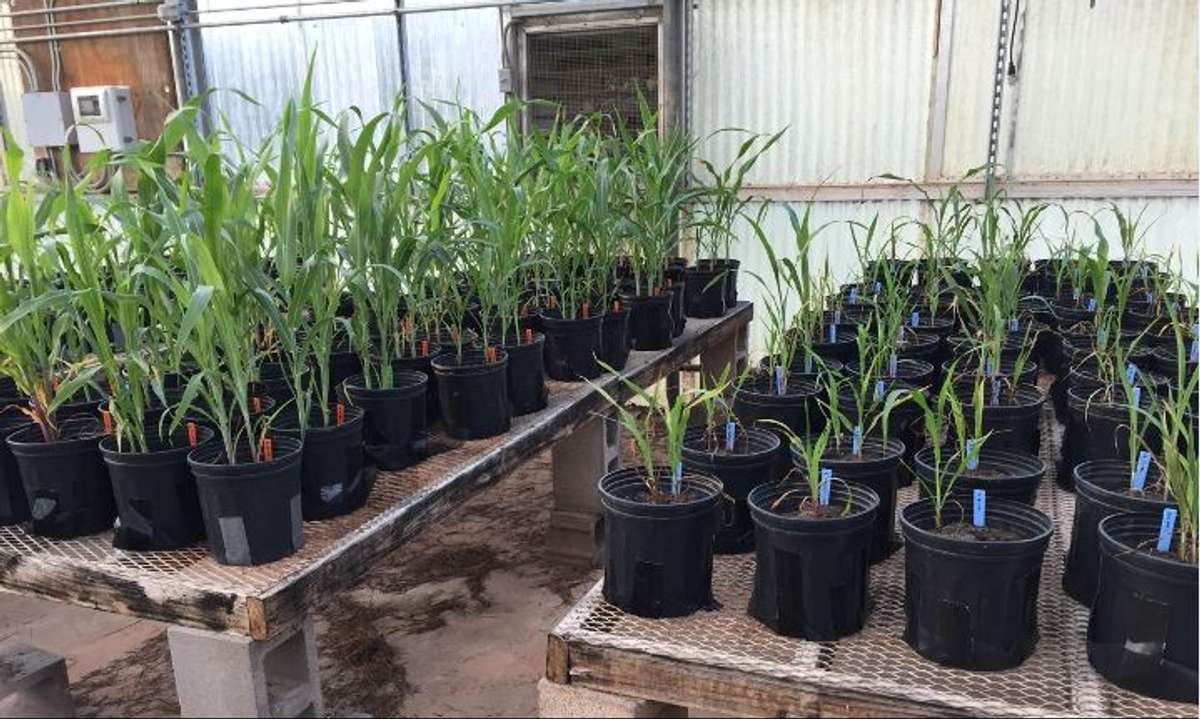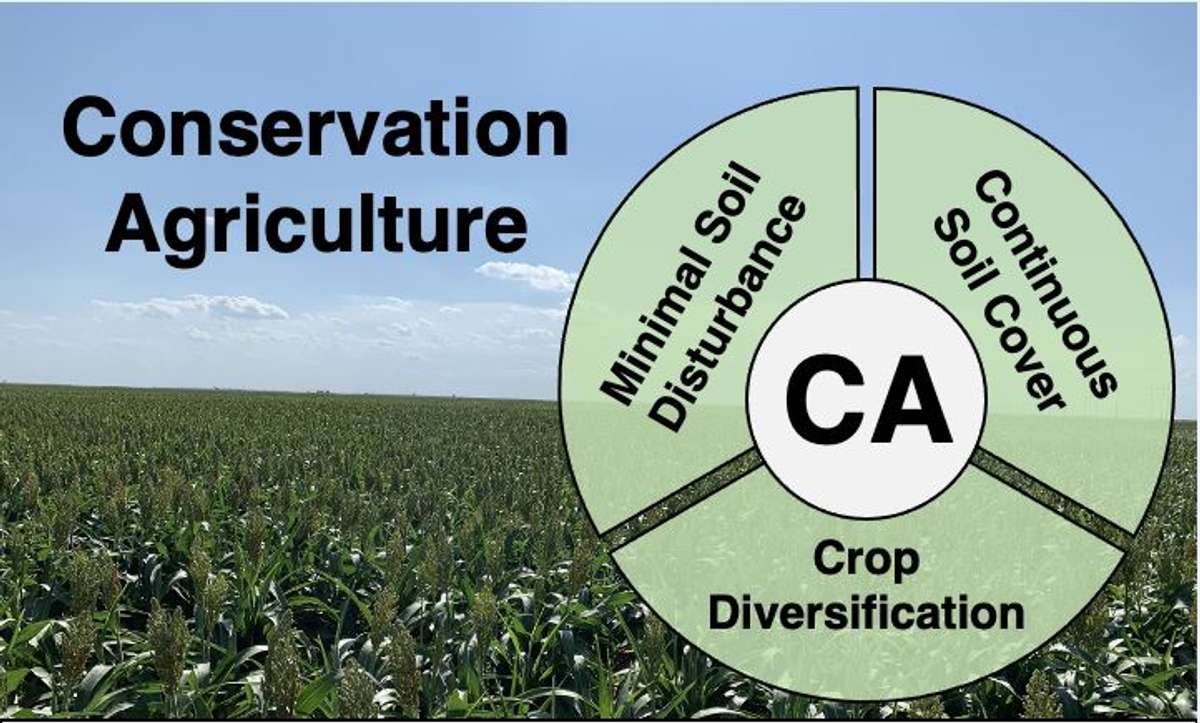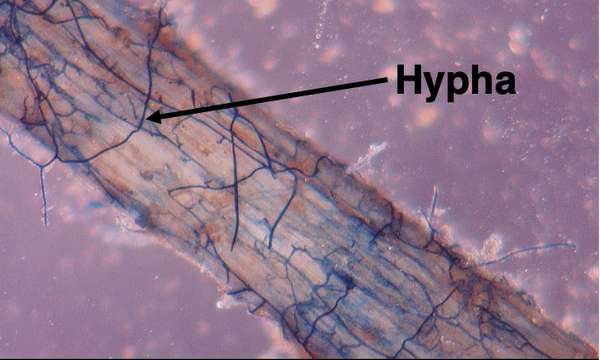This article is from ECHO Asia Note # 43
[Editor’s Note: Adam became involved with agriculture in 2009, after spending three months working and traveling across New Zealand as a farm worker. He earned a Master’s degree in International Agriculture, with emphasis in rural development, before pursuing his doctorate in soil ecology. This article stems from several years of research on this topic; including time spent studying grassland ecosystems in China.]

Microbial Life and Soil Health
Soil microbes influence almost every food production system on earth. Microbial life helps build and maintain human society because they are among our greatest agricultural allies. Ten years ago, I began studying an exceptional group of soil microbes called ‘mycorrhizal fungi’. These microscopic fungi are essential for productive soil ecosystems, because they support plants and other beneficial soil microbes. With proper management, they can help us improve food production, accelerate rural development, and promote community nutrition security.
There are many ways to discuss soil ecosystems, and numerous physical, chemical, and biological terms can become overwhelming. I favor an overall concept called ‘soil health’ because it reminds us soil is alive, and like all living systems, can range from vibrant to broken. The capacity of soil to sustain plant, animal and human life is fundamental to soil health. I focus on the abundance, diversity and functions of mycorrhizal fungi as key indicators, because we often observe thriving mycorrhizal fungi and other microbes building soil health and developing system stability, resilience and productivity over time.
The word ‘mycorrhiza’ is a combination of ‘fungus’ and ‘root’ in Greek. These simple words point to an amazing relationship, connecting two unlikely partners. Most plants and mycorrhizal fungi rely on each other for survival, with plants hosting and feeding fungal partners that in turn extend the reach of root-systems. This means host plants and fungi cooperate to access nutrients and water that are further away from roots or locked up in organic and mineral material (Figure 1). In fact, around 80-90% of our world’s plants form mycorrhizas, gaining remarkable benefits from this ancient and advantageous partnership.
So why are mycorrhizal fungi valuable for small-scale farmers? Despite being too small to see with the naked eye, they are naturally abundant almost everywhere plants grow – helping hosts obtain soil nutrients and water, protecting hosts from disease, and improving soil health. Mycorrhizal fungi and plants are two companions forming one life together, a ‘symbiosis’. When this symbiosis functions well, agricultural land thrives. When this symbiosis breaks down, soil ecosystems tend to break down as well, leading to land degradation.
Globally, soils are degrading faster than ever before, and regeneration of soil health is one of the best strategies for agricultural development. We now know great empires, such as ancient Babylon, crumbled in large part because of soil mismanagement (Rimas & Fraser 2010). Unfortunately, current human activities are still harming soils across every nation. Indeed, we face looming challenges due to soil erosion and fertility loss, threatening human access to sufficient food and nutrition. We desperately need soils teeming with diverse life, such as mycorrhizal fungi, because that life is the foundation of soil health and sustainable food production.
Regenerating Soils for a Brighter Future
In North and South America, Africa, and Asia, I witnessed the consequences of soil abuse. Overgrazing, over-tilling, deforestation, and neglect are turning lush areas into deserts. In Zambia, I sampled soils from several small farms and found mismanagement has already destroyed half the original microbial life, particularly mycorrhizal fungi (Cobb & Wilson 2018). That means local crops are receiving fewer resources while soils are losing fertility and stability. Despite this frightening reality, I have hope for our future because of mycorrhizal fungi and our other ‘tiny underground allies’. How can we reverse widespread soil degradation?
I collaborated with several students and professors in China, working to rehabilitate overgrazed grasslands. These grasslands are critical to thousands of herdsmen, but years of overuse threaten entire communities. Overgrazing causes loss of nutritious forage plants, so weedy competitors spread and decrease grassland productivity. Aboveground changes cascade belowground, reducing microbial life and soil health, with negative consequences for local environments and livelihoods. Thankfully, a key discovery of our research is that reseeding native legumes can help restore fertility and mend broken symbiotic relationships that allow mycorrhizal fungi to thrive (Zhang et al. 2019).
If we carefully manage farms and grasslands to support mycorrhizal fungi, they can help reverse soil

degradation. For example, many microbes produce ‘bio-glues’ that stick soil particles together and reduce erosion. Evidence indicates mycorrhizal fungi also increase populations of other beneficial microbes such as nitrogen-fixing bacteria that help rebuild and maintain soil fertility. It is important to understand mycorrhizal fungi and most microbes do not add or create soil nutrients, so optimized supplemental fertilization is typically required. However, they can improve ecosystem dynamics and boost production efficiency by releasing and cycling critical nutrients in soil. We now understand a number of ways to manage mycorrhizas in grasslands, and new approaches are unleashing their benefits across diverse food production systems.
Beyond plant productivity, mycorrhizal partnerships improve plant, animal and human nutrition. After linking with plant roots, mycorrhizal fungi explore soil for essential nutrients, especially phosphorus. They provide these nutrients to host plants in exchange for excess sugars. My research suggests colonization of plant roots by mycorrhizal fungi can increase food yields and nutritional value. Indeed, we found ~250% greater production and ~300% greater nutritional content for plants with extensive root colonization, compared to non-colonized plants (Figure 2, Cobb et al. 2016). Currently, more than 2 billion humans suffer from malnutrition, suggesting mycorrhizas can improve both soil health and human health (Cobb et al. 2018).
Strategies to Sustain and Enhance Mycorrhizas
How do we reimagine agricultural systems that enhance rather than damage living soils? Restoring symbiotic relationships is central to supporting farmers and herdsmen, as they move toward more sustainable food and forage production. There is never a single solution for every setting, but I recommend three specific soil management principles that promote symbiotic microbes so they can build soil health. The exciting truth is these principles are embedded within the FAO’s Conservation Agriculture (CA) framework, already spreading and benefitting smallholder farming and herding communities around the planet.

The core ideas of CA are adaptable to most food production systems. Applying these principles encourages greater abundance and diversity of mycorrhizal fungi. In fact, many soil health improvements, following application of CA, are propelled by mycorrhizal fungi and other symbiotic microbes. According to FAO, farming systems under a CA framework have three features (Figure 3): In addition to restoring soil ecosystems, these principles promote local environmental, economic, and community resilience.
(1) Minimal Soil Disturbance
I advocate we look for every opportunity to minimize soil disturbance, due to its negative effects on symbiotic

microbes. Mycorrhizal fungi develop an extensive and complex system of hypha in soil over time – hypha are tube-like fungal structures that transport soil nutrients to host plants (Figure 4). Tillage and other disturbances tear networks of hypha apart, causing direct harm and reducing fungal abundance. This ultimately decreases agricultural yields and crop nutritional quality, while disrupting soil stability. Differences in soil type and climate make it difficult to promise a specific timeline or outcome for any farm practice; however, we see substantial benefits from reduced tillage. There can be trade-offs, especially during the first few years of transition, but most food producers are cutting overall costs and preventing erosion by reducing their use of tillage.
(2) Continuous Soil Cover
Along with reduced soil disturbance, farmers observe substantial benefits from continuous soil cover. Previously, many people considered crop residues a problem, and removed, burned, or plowed old material. Residues can harbor plant diseases that threaten future crops in non-rotational cultivation; however, systems designed for diverse plant rotations can break these disease cycles. Residues eventually break down to release nutrients and contribute to soil organic matter. Residues also act as a mulch, potentially reducing weeds, retaining soil moisture, and maintaining more consistent temperatures. These conditions directly protect mycorrhizal fungi and other symbiotic microbes. Seeding into heavy crop residues presents challenges, often requiring specialized equipment, but there are innovative appropriate technologies to overcome this hurdle. Cover crops may include legumes that add nitrogen to farm systems, and cover plants can ultimately be grazed or harvested as fodder. The best option is maintaining living roots in farm soil at all times. Mycorrhizal fungi cannot grow or reproduce without living roots, as they cannot acquire sugars without a host plant. So, empty fields are a recipe for microbial mortality, but continuous living cover supports abundant soil life.
(3) Crop Diversification
Mycorrhizal fungi are a diverse group of microbes. We are still discovering new species, especially in unique soil environments, and diversity is a key aspect of food system resilience. For example, during a drought, different species of mycorrhizal fungi may flourish. When water is scarce, thirsty plants reward fungi that best provide water. In wetter years, these species may become less common, as fungi that provide other limiting resources are rewarded by host plants. We need ‘biodiverse’ agricultural ecosystems, enabling a complex web of soil life. We now know aboveground diversity is linked with belowground diversity. Rotating crops or management practices is not only important to break disease cycles, but also supports diverse communities of mycorrhizal fungi and other symbiotic organisms. In fact, amazing outcomes are reported on farms where cultivation patterns shift across seasons, where multiple food crop species are planted over time and livestock grazing is integrated.
I am confident in the value of CA principles, but no magic solution exists. Different soils, climate and food production cultures make it impossible to provide a ‘one size fits all’ remedy. For example, techniques discovered in northern China must be modified for warmer or wetter grasslands. I believe in the power of local adaptation. Growing local crop varieties, using appropriate technologies, and supporting local symbiotic microbes are key to successful and sustainable food production. I urge rural development specialists to understand barriers in their communities and help producers apply locally adapted Conservation Agriculture.
Potential Pitfalls and A Growing Revolution
Unfortunately, I find some misconceptions whenever I present my research, so I offer three specific warnings:
- Be cautious of commercial products claiming to contain beneficial mycorrhizal fungi.
- Be skeptical that a particular practice will be effective in isolation.
- Be aware there are no miraculous ways to fast-forward recovery of soil health.
There is growing interest in commercial mycorrhizal inoculants, but I do not recommend using them at this time. There is amazing research on effective inoculants, but few locally adapted commercial products. If products contain fungi that are not locally adapted, they tend to be a waste of money or even cause serious problems.
Due to ‘Natural Farming’ systems, locally adapted indigenous microorganisms (IMO) are becoming popular among food producers. These techniques encourage cultivation of local bacteria and fungi to benefit farm systems, and I encourage small-scale producers to experiment with IMO. Mycorrhizal fungi require host plants to propagate, so they are not typically present in IMO treatments; however, there are important lessons we can learn from ‘Natural Farming’ philosophies.
Mycorrhizal fungi in local soils are best suited for local conditions and are more likely to provide what local plants need, compared to fungi imported from distant locations. In fact, non-local fungi may disrupt communities of local symbiotic microbes. We tested commercial products and, in some cases, found no living fungi. In other products, we found extremely high amounts of phosphorus. Unfortunately, excessive phosphorus can break natural mycorrhizal partnerships; plants appear to grow well, but fungi become less beneficial and active, diminishing soil health. I recommend farmers avoid commercial mycorrhizal inoculants in most circumstances.
All around the globe, beneficial mycorrhizal fungi are already present in local agricultural ecosystems, especially in perennial grasslands. Instead of adding expensive products, I suggest redesigning food production practices to increase abundance and diversity of local mycorrhizal fungi. This is why I encourage implementation of CA principles to provide systematic support for mycorrhizas. I know it is challenging to ask food producers to rapidly alter their behavior, but each of the three components of CA may not be fully effective without the others. For example, reducing soil disturbance alone may result in unacceptable pressure from weeds or disease. However, reducing soil disturbance, ensuring continuous soil cover, and increasing crop diversity can all work together as a complete strategy to suppress weeds and diseases while improving soil health.
In many cases, the value of soil health has been lost over time. Deeply degraded soils likely require years to recover. Regeneration may involve considerable intervention and investment. In fact, extremely degraded areas may need to be planted with perennial grasses for several seasons before soils recover enough to produce annual crops. Soil ecosystems are complex and often mysterious; typically, quick and easy fixes for broken soils are untrustworthy.
I recognize most ECHO professionals work with farmers who are barely enduring daily challenges, making it difficult to recommend risky new ideas. Fortunately, CA principles are already improving soil health in many communities; even when applied slowly, CA is often a wonderful approach to assist both mycorrhizas and small-scale food producers.
We often talk about the importance of the Green Revolution, despite several associated environmental and social issues. Crop breeding and agronomy are among our greatest tools for global food production. However, another important movement is emerging – a ‘Brown Revolution’ – unlocking the power of living soil to sustainably meet human needs. I am excited by new discoveries and innovative methods for regenerating soil ecosystems. Healthy soil is a vehicle that can help transport rural communities out of poverty, nourish our growing population, and secure a brighter future. There are many important factors in agricultural development, yet soil health is central to sustainable production. Mycorrhizal fungi have a unique role in this story, and if we support these tiny underground allies, they will support us.
Acknowledgements
Adam is currently supported by project no. OKL03144 / project accession no. 1019172, from the USDA, National Institute of Food and Agriculture (NIFA).
References
Cobb, A.B., Wilson, G.W., Goad, C.L., Bean, S.R., Kaufman, R.C., Herald, T.J. and Wilson, J.D., 2016. The role of arbuscular mycorrhizal fungi in grain production and nutrition of sorghum genotypes: Enhancing sustainability through plant-microbial partnership. Agriculture, Ecosystems & Environment. 233: 432-440. Available: https://doi.org/10.1016/j.agee.2016.09.024
Cobb, A.B., Wilson, G.W., Goad, C.L. and Grusak, M.A., 2018. Influence of alternative soil amendments on mycorrhizal fungi and cowpea production. Heliyon. 4: e00704. Available: https://doi.org/10.1016/j.heliyon.2018.e00704
Cobb, A.B. and Wilson, G.W., 2018. Influence of smallholder farm practices on the abundance of arbuscular mycorrhizal fungi in rural Zambia. Pedobiologia. 69: 11-16. Available: https://doi.org/10.1016/j.pedobi.2018.06.004
Rimas, A. and Fraser, E., 2010. Empires of food: feast, famine, and the rise and fall of civilizations. Simon and Schuster.
Zhou, J., Wilson, G.W., Cobb, A.B., Yang, G. and Zhang, Y., 2019. Phosphorus and mowing improve native alfalfa establishment, facilitating restoration of grassland productivity and diversity. Land Degradation & Development. 30: 647-657. Available: https://doi.org/10.1002/ldr.3251